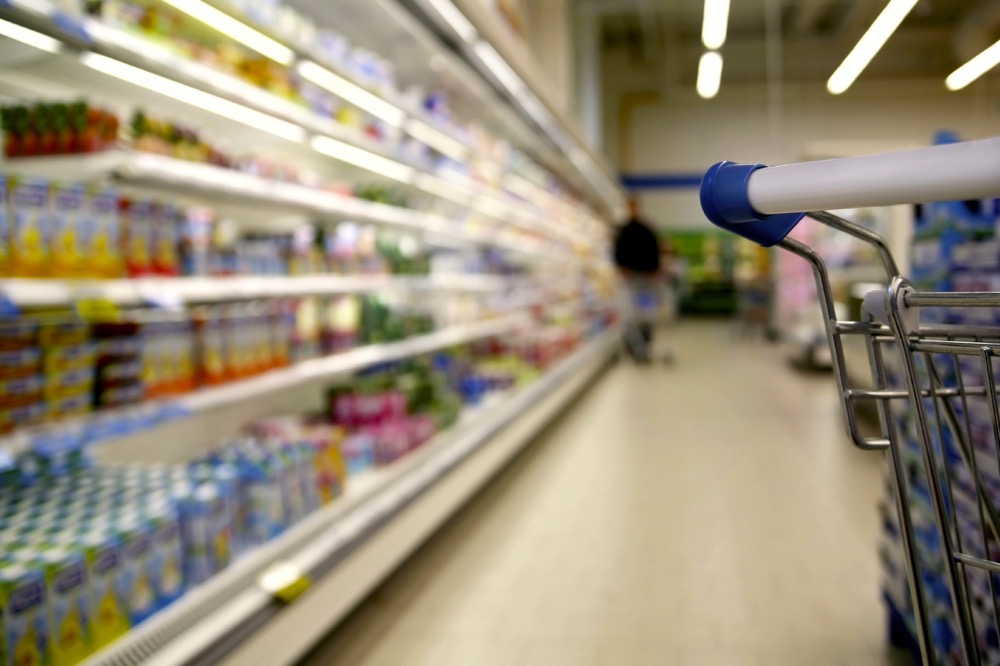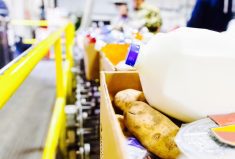Accusations of gouging in the food industry have reached an all-time high.
According to a recent survey, 68 per cent of Canadians believe food corporations are taking advantage of the inflationary cycle to increase prices, and it’s not just in retail. While Quebec and British Columbia now have class-action lawsuits against the beef industry, many trade groups and politicians are asking the federal government to investigate.
We will hear complaints from consumers about prices being exaggeratedly inflated in different sectors, such as automotive, telecommunications, pharmaceuticals and airlines.
Read Also

The great food summit adventure
Alberta Farmer columnist Lee Hart attended the Food Leadership Summit in Calgary, where about 400 ag industry players gathered for the new annual conference.
But food is different. The stakes are different for everyone. The balance between profits and profiteering is incredibly delicate. Along with energy, food is the most volatile element when measuring inflation, essentially due to how the category is easily affected by weather, labour and geopolitics.
Half of the products in a grocery store are perishable and rely on cold chains. That aspect alone makes things more complicated than moving car parts or wood. Getting food from farm to store, or to restaurant, is a battle of time and pressure every day. Failure means more waste, more problems, more costs and higher food prices.
It’s easy to blame food companies; it’s populist, really. Grocers get most of the backlash from consumers due to their exposure. In recent weeks, many have criticized grocers for recording historically high profits, and accused them of taking advantage of the current inflationary cycle. Grocers have been desperate to be ahead of the market. When carrying 18,000 to 20,000 products, it’s not that simple. Looking at the financial performance of our three largest grocers, the numbers have been consistent.
Our largest grocer, Loblaws, has posted consistent gross margin and profit ratios since 2017. While gross margins have varied between 29.35 per cent and 31.47 per cent, profits are anywhere between 1.64 per cent and 3.53 per cent. For Empire/Sobeys and Metro, the results are similar. Gross margins for Empire/Sobeys varied between 23.97 per cent (2017) to 25.47 per cent (2021) and profits from 0.67 per cent (2017), to 2.48 per cent (2021). Metro had similar variations except for 2018, when profitability was at 11.93 per cent. That was likely due to Metro’s acquisition of Jean Coutu.
Acquisitions will skew how these companies perform financially, and we’ve seen many acquisitions in recent years. This is something we need to keep in mind.
Indeed, profits and margins are higher, but ever so slightly. Compared to some banks and other major economic players in our economy, the difference is relatively small. We also need to remember that many Canadians will benefit from these decent financial outcomes as most pension plans in Canada own shares in at least one of the big three.
The fact remains that any evidence of ‘greedflation’ in food retail in Canada is weak at best. That said, some prices in some food categories have behaved unreasonably in recent years, so it doesn’t mean ‘greedflation’ does not exist. Accepting that and accusing companies of being abusive, though, is the easy part.
Where it gets challenging is to set thresholds. How much is too much? Where’s the line between good business practice and greed? Some consumers are still willingly paying $28 for steaks at the grocery store, pushing prices higher for the rest of us.
Further investigation would be warranted. Other links of the supply chain are harder to analyze, since many companies are privately owned, and contracts are not public. And consumers have every right to be doubtful, considering that we have seen our share of price-fixing scandals in recent years. The bread price-fixing scheme is just one example.
Everyone would gain from looking at the more obscure sectors of the food industry, beyond retail, to better understand how our food supply chain works. A government-led inquiry would benefit us, but the focus would have to be narrow. The food industry is too vast to make any analysis worthwhile.
It’s also worth noting that the percentage of consumer expenditure on food consumed at home is one of the lowest in the world in Canada. According to the World Economic Forum, the average consumer spends 9.1 per cent of a total budget on food. In the United States, it is about seven per cent. In 1950, that percentage was more than 30 per cent, so we have come a long way.
Food inflation will peak soon in Canada, or it may have peaked already. Food prices will continue to rise but at a much slower pace in coming months. The year 2022 was to be the year of recovery from the pandemic, but Russia had other plans.
Food inflation is a normal economic phenomenon. To properly equip the industry in a way that Canadians get quality products at consistent pricing, prices should continue to rise.
Food inflation’s ideal rate is between 1.5 and 2.5 per cent, which is what we’ve seen for the last 20 years or so, except for this past year.
Canadians do have a strong food industry, though food affordability has been a challenge for many. But we need to look at ‘greedflation’ rationally before slinging mud at everything and anything.
– Sylvain Charlebois is professor of food distribution and policy at Dalhousie University and senior director of the Agri-Food Analytics Lab.















